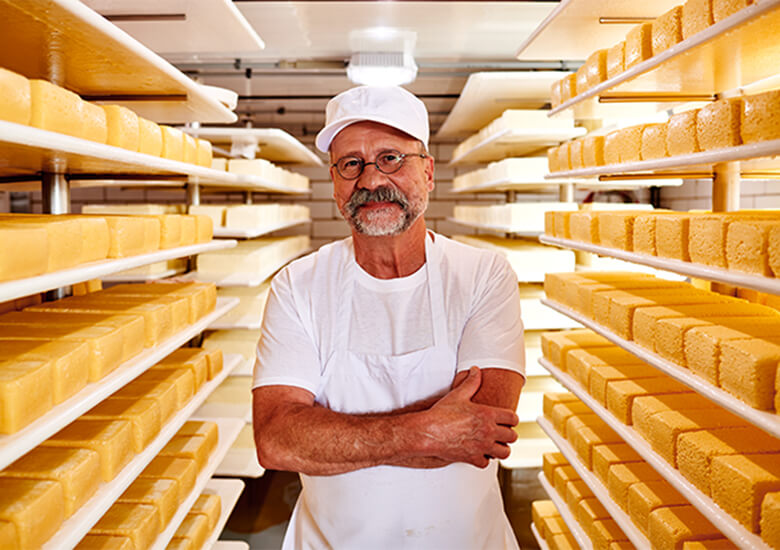Why Floridia Cheese Thomastown Is a Gem in Melbourne Made Cheese
Why Floridia Cheese Thomastown Is a Gem in Melbourne Made Cheese
Blog Article
Opening the Secrets of Artisanal Cheese Making: A Step-by-Step Do It Yourself Guide
In the world of cooking craftsmanship, artisanal cheese making stands as a testimony to the fragile equilibrium between custom and advancement. As we begin on this journey to demystify the art of creating beautiful cheeses, we are faced with a tapestry of abilities and tricks waiting to be unraveled.
Selecting the Right Milk
When embarking on the trip of artisanal cheese production, the choice of milk plays a critical role in identifying the quality and characteristics of the end product. The sort of milk chosen influences the flavor, texture, and in general account of the cheese. Raw milk, straight from the pet, is favored by lots of artisanal cheesemakers due to its unique mix of enzymes, germs, and flavor substances. Using raw milk comes with regulations and threats, making sterilized milk a much safer alternative for novices.
When selecting milk for cheese production, it is necessary to think about the fat web content. Greater fat content in milk can result in a creamier and richer cheese, while reduced fat web content might result in a drier and firmer appearance. Furthermore, the resource of the milk, whether from cows, goats, lamb, or buffalo, contributes unique tastes and characteristics to celebrity (Floridia Cheese). Each sort of milk brings its very own subtleties, enabling a wide variety of cheese varieties to be crafted based on the selected milk. Inevitably, the choice of milk is a basic choice that sets the foundation for a successful artisanal cheese-making venture.
Culturing and Coagulating
To initiate the cheese-making process, the essential steps of culturing and coagulating should be thoroughly carried out to transform milk into curds and whey. Culturing involves presenting helpful microorganisms to the milk, which after that begins the fermentation process. These bacteria convert lactose (milk sugar) right into lactic acid, developing the acidic setting needed for coagulation. The sort of society utilized can substantially affect the flavor, texture, and ripening of the last cheese product.

The timing and temperature level control during culturing and coagulation are critical aspects that influence the last outcome of celebrity. Proper implementation of these actions is vital to ensure the preferred texture, flavor, and uniformity of the artisanal cheese being created.
Draining Pipes and Pressing Curds
After the milk healthy proteins have actually coagulated and the curds have been cut to launch whey, the following essential step in artisanal cheese making involves draining and pushing the curds to attain the desired structure and uniformity of the last cheese item. The time for draining pipes can vary depending on the type of cheese being made and the preferred dampness content.
When the curds have completely drained pipes, the following action is pressing. Pushing helps remove any type of continuing to be whey and compacts the curds to develop a solid cheese wheel. Pushing can be done utilizing specialized cheese presses that use mild and consistent stress over an amount of time. The period and stress used throughout pushing will certainly affect the last appearance of celebrity, from soft and creamy to hard and company. Correct pushing and draining pipes are crucial steps that substantially affect the high quality and attributes of the artisanal cheese being created.
Aging and Flavor Methods
Carrying out precise aging and flavoring strategies is crucial in improving the depth and intricacy of artisanal cheeses, boosting their taste profiles to elegant degrees of improvement and refinement. Aging plays an essential role in developing the one-of-a-kind flavors and textures that identify artisanal cheeses. During the aging procedure, cheeses are kept in very carefully managed environments where variables such as temperature, humidity, and air flow are controlled to encourage the development of advantageous mold and mildews and bacteria. This controlled setting allows celebrity to mature slowly, creating intricate aromas and rich flavors.
Flavoring methods likewise add considerably Cheese Makers Melbourne to the final taste of artisanal cheeses. Cheesemakers might pick to present additional flavors by integrating components such as natural herbs, seasonings, or even fruits into the cheese throughout the production process. Furthermore, some cheeses are washed or scrubed with different fluids, such as salt water or alcohol, to boost their tastes and appearances.
Covering and Saving Cheeses

Verdict
In conclusion, grasping the art of artisanal cheese making entails very carefully picking the ideal milk, adhering to accurate culturing and coagulating procedures, draining pipes and pressing curds successfully, and making use of various aging and flavoring strategies. By following these steps carefully and with focus to detail, you can produce your very own scrumptious and unique cheeses in your home. Keep in mind to cover and save your cheeses properly to make sure optimum taste and texture development. Happy cheese making!
Each type of milk brings its own nuances, allowing for a wide range of cheese varieties to be crafted based on the picked milk.After the milk healthy proteins have actually coagulated and the curds have actually been reduced to release whey, the next important step in artisanal cheese making involves draining and pushing the curds to achieve the desired appearance and uniformity of the last cheese product. Many cheeses ought to be wrapped in wax paper or cheese paper to allow them to take a breath while shielding them from drying out. For cheeses that require to continue aging, such as bloomy rinds or washed skins, ensure they are saved in an awesome environment like a cheese cavern or a refrigerator set to the suitable temperature. By paying attention to the covering and storage of artisanal cheeses, cheese manufacturers and lovers can protect the integrity of these specials and completely enjoy their complicated flavors.
Report this page